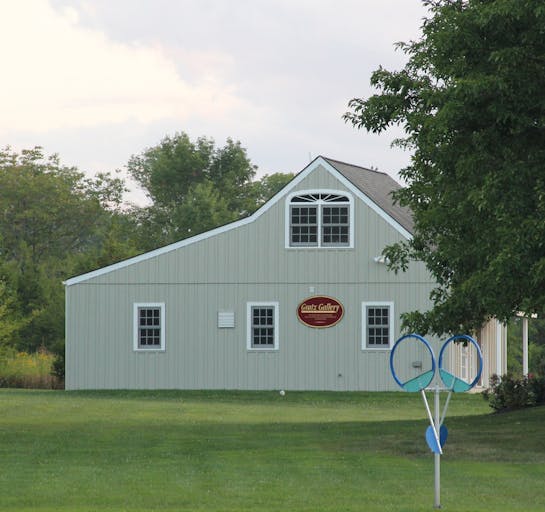Arthur Dove
1880 - 1946

Arthur Dove
1880 - 1946
Born in Canandaigua, upstate New York, Arthur Dove is credited as being the first innovative abstract painter in America. Many of his abstractions showed obvious Oriental influence and were derived from landscape and organic subjects with color used freely and calligraphic line emphasizing energy or force. Generally his method was to make watercolor sketches outdoors and later oil paintings in his studio.
He also made assemblages from a variety of materials including aluminum, tin, copper, glass, wood, fabric, and found objects. Some were three dimensional like sculpture, and he was a meticulous craftsman.
He was named for the presidential and vice presidential candidates in 1880 and grew up in a conventional upper middle-class family in Geneva, New York where his father was a brickmaker and contractor. Dove started drawing at an early age and began painting at age nine at the encouragement of a neighbor, Newton Weatherby, who was a naturalist and truck farmer as well as amateur painter and musician. Weatherby inspired a life-long love of nature in Dove, which was evident in his artwork.
His independent spirit was evident early when at the age of twelve he resigned from the Presbyterian Church for refusing to allow an atheist a right to his opinion. He attended Hobart College for two years and Cornell University, where he studied pre-law to please his father but became increasingly interested in art. A creator of humorous caricatures, he was yearbook editor and was guided towards illustration by an instructor.
After graduating in 1903, he was a commercial illustrator in New York, working for "Harpers," "Scribners," "Collier's," "Life," and the "Saturday Evening Post." He married a hometown friend, lived comfortably in the city, and painted in his spare time, but his growing desire to paint led to their going to Paris.
There he met Alfred Maurer, who was to be his best friend for the remainder of his life, and through him moved in art circles that included Matisse, Picasso, and Cezanne. His style at that time was impressionist, but he and Maurer worked to reduce impressionism to larger areas of pure color in the manner of Matisse and Fauvism.
He returned to New York in 1909 and took up illustrating again briefly, but through contact with Alfred Steiglitz, exhibited with Steiglitz' Gallery 291 of avant-garde artists. The American public's first exposure to Dove was in a 1912 exhibit at Gallery 291 and shocked many viewers who regarded him as a deranged modernist. Steiglitz friendship and encouragement proved extremely valuable to Dove who also moved in avant-garde art circles with John Sloan, William Glackens, Robert Henri, Alfred Maurer, and Georgia O'Keeffe.
Struggling financially, he moved his young family to Westport, Connecticut and with little family support for his career, his first marriage broke up. He later married Helen Torr (Reds), and they lived frugally on houseboats and as caretakers in private homes. Although critics began to recognize his work, the public did not respond during his lifetime, and few of his works sold.
In 1933, he inherited the meager estate of his parents and moved to Geneva for five years where he tried to make a living as a farmer but had little success. Bad health forced him in 1938 to an inlet on Long Island Sound, and he lived there the remaining six years of his life as a semi-invalid with painting as his only activity. With the help of his wife who held his hand with the brush, he was highly productive doing paintings with loose wash-like qualities. His cheerful personality was reflected in the tranquil mood of his work. He died of a heart attack in November, 1946.
Source: Askart.com
